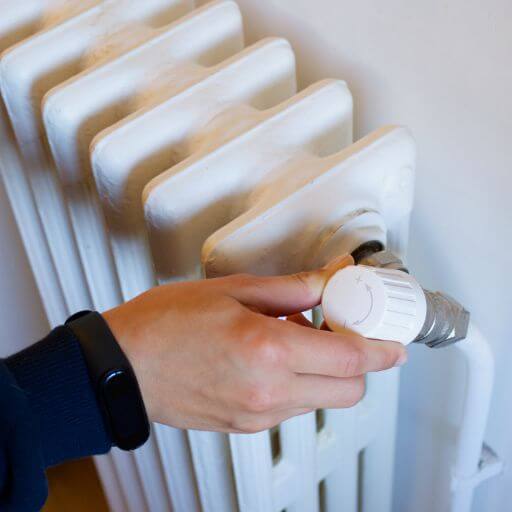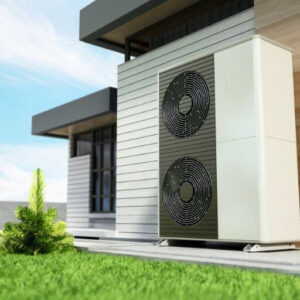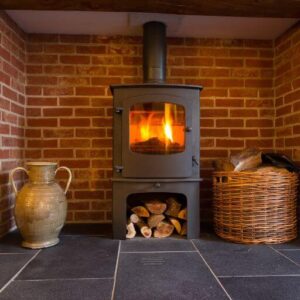
If you’ve ever wondered about the most cost-efficient option for keeping your home warm, then this article is for you. In “What Type Of Radiator Is Cheapest To Run?”, we explore the different types of radiators available and analyze which one could save you the most money in the long run. Read on to discover the key factors to consider when choosing a radiator and find out which option could be the most affordable for your heating needs.
Electric Radiator
Energy Efficiency
Electric radiators are known for their high energy efficiency. They convert almost 100% of the electrical energy into heat, making them highly efficient in terms of energy consumption. This means that with an electric radiator, you can be sure that you are getting the most out of the energy you are paying for, resulting in lower electricity bills.
Installation Cost
Electric radiators are relatively easy to install since they do not require any complex plumbing or gas connections. This means that you can save on installation costs as you won’t need to hire a plumber or a gas engineer. Additionally, electric radiators are usually sold as standalone units, so you won’t have to invest in additional components or accessories.
Maintenance Cost
Electric radiators are also very low on maintenance costs. Unlike gas or oil-based heating systems, there are no filters to clean or fuel lines to maintain. Electric radiators typically only require occasional dusting to keep them operating efficiently. This means less time and money spent on maintenance, allowing you to enjoy the benefits of your electric radiator without any hassle.
Gas Radiator
Energy Efficiency
Gas radiators are known for their energy efficiency, although they are slightly less efficient than electric radiators. Gas-powered systems utilize natural gas or propane to heat the radiators, converting the energy from the gas into heat. However, some heat is lost through the flue gases during this conversion process, resulting in a slightly lower energy efficiency compared to electric radiators.
Installation Cost
Installing a gas radiator can be more complex and costly compared to electric radiators. Since gas radiators require a gas connection, you may need to hire a professional gas engineer to install or connect the radiator to the existing gas supply. This additional step can increase the installation cost, especially if you don’t already have a gas line in your home.
Maintenance Cost
Gas radiators require regular maintenance to ensure optimal performance and safety. This includes servicing the boiler and checking for any gas leaks or potential issues. Annual maintenance is typically recommended for gas heating systems, which can add to the overall maintenance cost. Additionally, if repairs or replacements are needed, the cost can also be higher compared to electric radiators.
Ground Source Heat Pump
Energy Efficiency
Ground source heat pumps (GSHPs) are one of the most energy-efficient heating systems available. They use the constant temperature of the ground to extract heat, which is then transferred to radiators or underfloor heating systems. GSHPs can achieve very high levels of energy efficiency, as they utilize renewable energy and require less electricity to operate compared to electric or gas radiators.
Installation Cost
The installation cost of a ground source heat pump can be higher compared to other heating systems. GSHPs require the installation of underground pipes, known as ground loops, which can involve excavation and drilling. This additional work can increase the installation cost significantly. However, it’s important to note that GSHPs can provide long-term savings on energy bills, making them a cost-effective option in the long run.
Maintenance Cost
Maintenance costs for ground source heat pumps are relatively low. The ground loops, which are mainly responsible for heat exchange, require minimal maintenance once installed correctly. It is recommended to have your GSHP system checked and serviced by a professional every two to three years, ensuring optimal performance and longevity. Overall, the maintenance cost for GSHPs is generally lower compared to other heating systems.
Air Source Heat Pump
Energy Efficiency
Air source heat pumps (ASHPs) are another energy-efficient heating option. They extract heat from the outside air and use it to warm your home. While ASHPs are not as efficient as ground source heat pumps, they are more easily accessible and can still provide significant energy savings compared to traditional heating systems.
Installation Cost
The installation cost of an air source heat pump is generally lower than that of a ground source heat pump. ASHPs do not require extensive ground works like drilling or excavating, making the installation process less complex and costly. However, the overall cost can vary depending on the specific requirements of your home and the ASHP system you choose.
Maintenance Cost
Similar to ground source heat pumps, air source heat pumps have relatively low maintenance costs. Regularly cleaning and maintaining the outdoor unit, including removing debris or leaves, is recommended to ensure optimal performance. Additionally, having your ASHP system serviced by a professional every two to three years helps to identify and address any potential issues, keeping maintenance costs minimal.

Underfloor Heating
Energy Efficiency
Underfloor heating is known for its excellent energy efficiency. It distributes heat more evenly and at lower temperatures across your living space compared to traditional radiators. This means that you can achieve the same level of comfort while consuming less energy, leading to potential energy savings in the long run.

Installation Cost
The installation cost of underfloor heating can be higher compared to traditional radiator systems. It involves installing a series of pipes or electrical heating elements beneath the floor surface, which requires additional labor and expertise. However, underfloor heating can be a worthwhile investment, as it provides a luxurious and efficient heating solution for your home.
Maintenance Cost
Underfloor heating systems typically have very low maintenance costs. Once installed, they require minimal upkeep compared to radiators or other heating systems. Since there are no exposed radiators or pipes, there is less risk of leaks or damage. Regular visual inspections and cleaning are usually sufficient to ensure the system continues to operate efficiently.
Wood-Burning Stove
Energy Efficiency
Wood-burning stoves offer a traditional and cozy heating option. While they provide direct heat and a pleasant atmosphere, their overall energy efficiency can vary. The efficiency of a wood-burning stove depends on factors such as the quality of the wood used and the design of the stove itself. Modern, well-designed stoves can provide good energy efficiency, but they may not be as efficient as other heating systems.

Installation Cost
The installation cost of a wood-burning stove can vary depending on various factors. It includes the cost of the stove itself, the chimney installation, and any additional materials or components needed. Professional installation is often recommended to ensure safety and compliance with building regulations. While the initial cost may be higher compared to some heating alternatives, the ambiance and potential fuel cost savings can make it a worthwhile investment for many.
Maintenance Cost
Wood-burning stoves require regular maintenance to ensure safe and efficient operation. This includes cleaning the stove and chimney regularly to remove creosote buildup and inspecting for any signs of wear or damage. It’s important to use high-quality wood and ensure proper ventilation to minimize maintenance costs associated with stove efficiency or repairs. Overall, the maintenance cost can vary depending on the usage and condition of the stove.
Oil-Filled Radiator
Energy Efficiency
Oil-filled radiators are known for their energy efficiency as they retain heat well and continue to provide warmth even after they are turned off. The oil inside the radiator acts as a heat reservoir, allowing it to release heat gradually and maintain room temperature efficiently. This makes oil-filled radiators an effective and energy-efficient heating option.
Installation Cost
Installation of an oil-filled radiator is relatively simple and straightforward. Since they are standalone units, you can easily place them in any desired location without the need for complicated installation processes. This means that you can avoid additional installation costs associated with plumbing or gas connections.
Maintenance Cost
Maintenance costs for oil-filled radiators are minimal. Since there are no fuel lines or filters to clean, the main maintenance required is occasional dusting to keep the radiators functioning efficiently. It is also important to check for any signs of oil leakage or damage to ensure safe operation. Overall, oil-filled radiators offer a cost-effective heating option with low maintenance requirements.
Infrared Heater
Energy Efficiency
Infrared heaters are designed to emit infrared radiation, which directly heats objects and surfaces in its path, rather than heating the air. This targeted heat delivery can be energy-efficient as it eliminates heat loss through air circulation. By focusing on heating the immediate surroundings, infrared heaters can provide effective and efficient warmth in a cost-effective manner.
Installation Cost
The installation cost of an infrared heater is generally low compared to other heating systems. Infrared heaters are often portable or wall-mounted, making installation quick and easy. They typically plug into a standard electrical outlet, eliminating the need for complex installation processes or additional components.
Maintenance Cost
Maintenance costs for infrared heaters are typically low. Similar to electric radiators, they require minimal upkeep and generally only need occasional cleaning to remove dust or debris. Since there are no fuel sources or filters involved, the maintenance requirements are reduced, resulting in lower maintenance costs overall.
Conclusion
In conclusion, when considering the cheapest radiator to run, several factors come into play. Electric radiators and oil-filled radiators are known for their high energy efficiency and low maintenance costs, making them cost-effective options. Ground source heat pumps and air source heat pumps offer excellent energy efficiency, although the installation costs can be higher. Wood-burning stoves provide a cozy ambiance but may not be as energy-efficient as other options. Underfloor heating provides excellent energy efficiency, but the installation costs could be higher. Gas radiators offer good energy efficiency but may have higher installation and maintenance costs.
Ultimately, the best choice will depend on your specific needs, budget, and preferences. It is important to consider factors such as energy efficiency, installation costs, and ongoing maintenance before making a decision. Consulting with a heating professional can also provide valuable insights and help you choose the most cost-effective option for your home. Remember, finding the cheapest radiator to run is not just about upfront costs but also about long-term energy savings and comfort.
